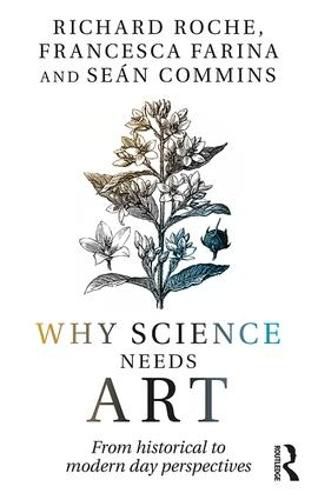Readings Newsletter
Become a Readings Member to make your shopping experience even easier.
Sign in or sign up for free!
You’re not far away from qualifying for FREE standard shipping within Australia
You’ve qualified for FREE standard shipping within Australia
The cart is loading…






Why Science Needs Art explores the complex relationship between these seemingly polarised fields. Reflecting on a time when art and science were considered inseparable and symbiotic pursuits, the book discusses how they have historically informed and influenced each other, before considering how public perception of the relationship between these disciplines has fundamentally changed.
Science and art have something very important in common: they both seek to reduce something infinitely complex to something simpler. Using examples from diverse areas including microscopy, brain injury, classical art, and data visualization, the book delves into the history of the intersection of these two disciplines, before considering current tensions between the fields. The emerging field of neuroaesthetics and its attempts to scientifically understand what humans find beautiful is also explored, suggesting ways in which the relationship between art and science may return to a more co-operative state in the future.
Why Science Needs Art provides an essential insight into the relationship between art and science in an appealing and relevant way. Featuring colorful examples throughout, the book will be of interest to students and researchers of neuroaesthetics and visual perception, as well as all those wanting to discover more about the complex and exciting intersection of art and science.
$9.00 standard shipping within Australia
FREE standard shipping within Australia for orders over $100.00
Express & International shipping calculated at checkout
Why Science Needs Art explores the complex relationship between these seemingly polarised fields. Reflecting on a time when art and science were considered inseparable and symbiotic pursuits, the book discusses how they have historically informed and influenced each other, before considering how public perception of the relationship between these disciplines has fundamentally changed.
Science and art have something very important in common: they both seek to reduce something infinitely complex to something simpler. Using examples from diverse areas including microscopy, brain injury, classical art, and data visualization, the book delves into the history of the intersection of these two disciplines, before considering current tensions between the fields. The emerging field of neuroaesthetics and its attempts to scientifically understand what humans find beautiful is also explored, suggesting ways in which the relationship between art and science may return to a more co-operative state in the future.
Why Science Needs Art provides an essential insight into the relationship between art and science in an appealing and relevant way. Featuring colorful examples throughout, the book will be of interest to students and researchers of neuroaesthetics and visual perception, as well as all those wanting to discover more about the complex and exciting intersection of art and science.